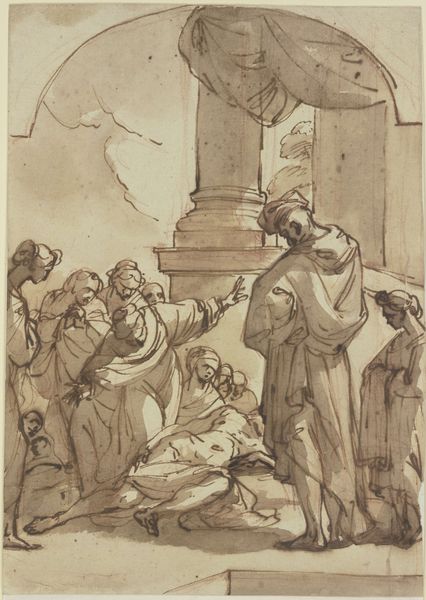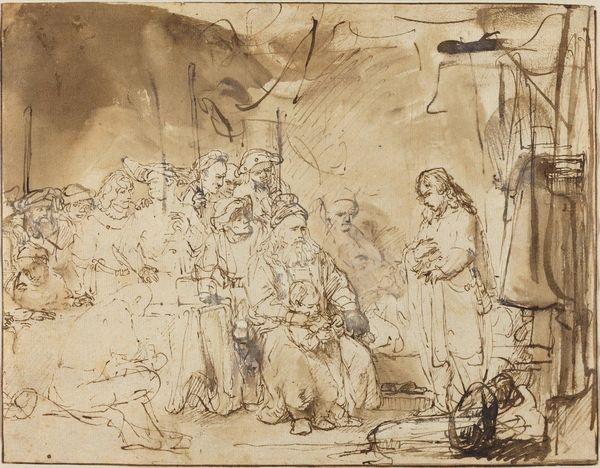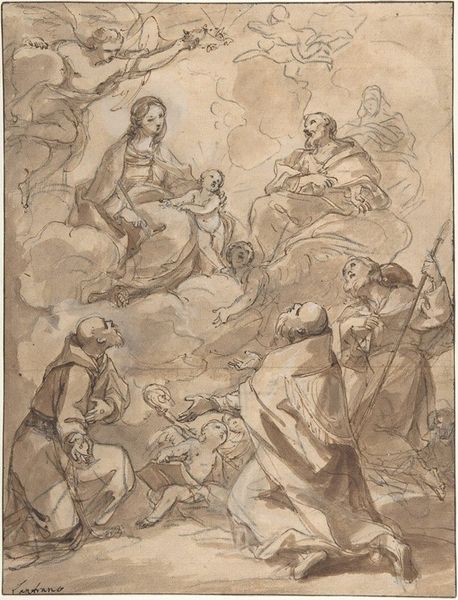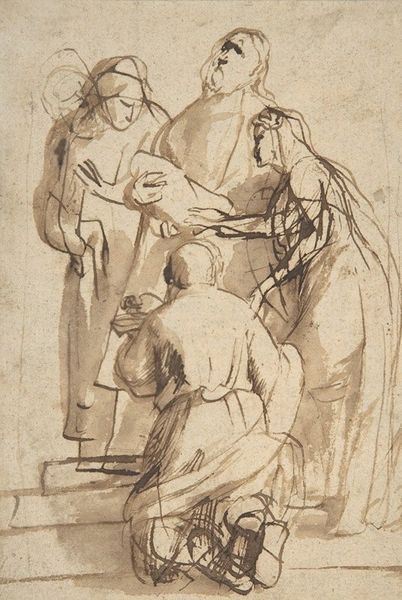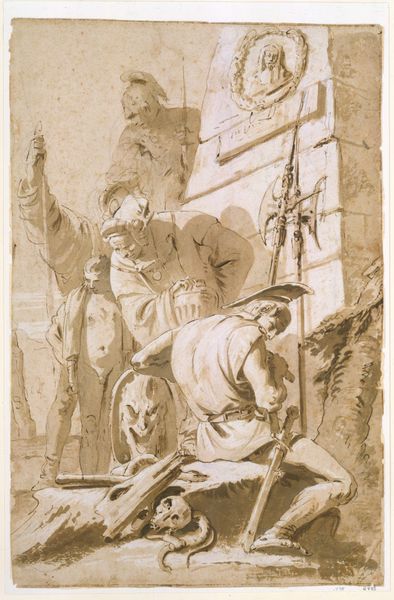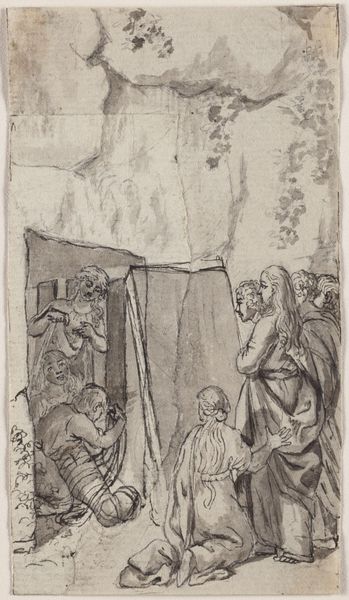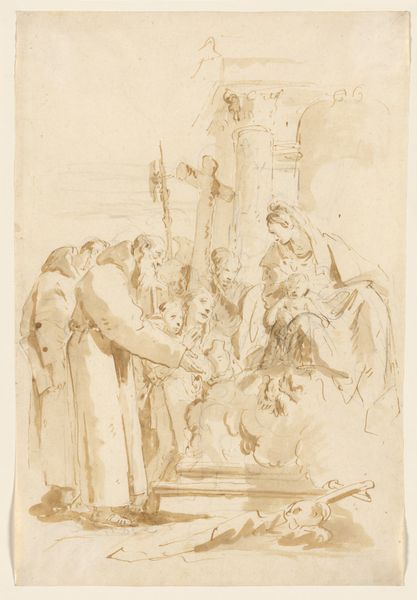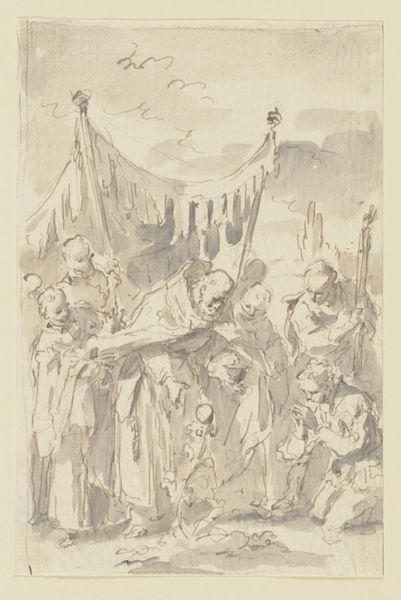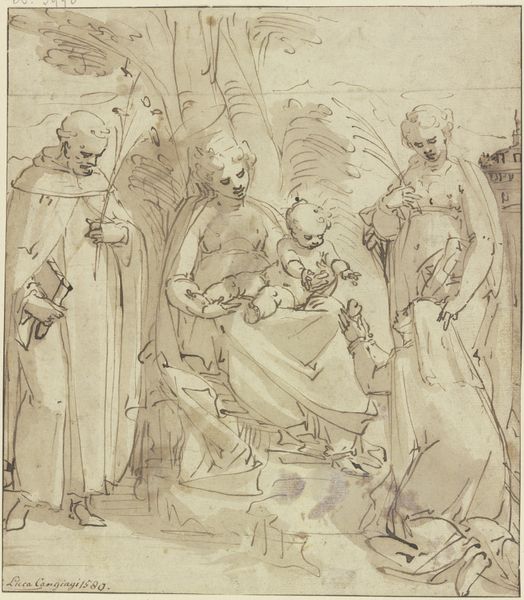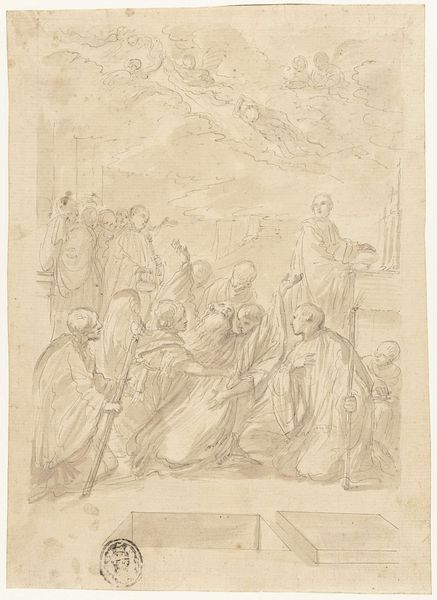
Saint Margaret of Cortona, Saint James of the March, and Saint Didacus 1734 - 1802
0:00
0:00
Copyright: Public Domain: Artvee
Editor: This ink and pen drawing, "Saint Margaret of Cortona, Saint James of the March, and Saint Didacus" by Gaetano Gandolfi, made sometime between 1734 and 1802, is really captivating. There’s a hazy, dreamlike quality to it. I'm particularly curious about what the artist is trying to communicate with such a distinct visual language. What do you see in this piece? Curator: Oh, this Gandolfi drawing! It's like peering into a swirling spiritual vortex, isn't it? For me, it’s a fascinating example of Baroque drama distilled onto paper. The dynamic composition pulls the eye upwards, guided by the gestures of these figures reaching for… well, for something beyond. Are they offering solace, seeking divine intervention, or perhaps showcasing miraculous healings? Notice how the ink washes create a sense of ethereal light, almost as if the divine is breaking through the earthly realm. Editor: I see what you mean. It's as though the artist wasn’t just representing saints but creating an atmosphere of intense devotion. The almost chaotic grouping of figures below, do you think that’s just a stylistic choice, or might there be a narrative element there too? Curator: Narrative, absolutely! Gandolfi isn't just showing us pretty faces; he's hinting at stories of suffering and salvation. These Baroque artists loved to evoke strong emotions. Do you think the composition aids the Baroque feel, or perhaps another stylistic choice is most prominent? Editor: Thinking about the placement of each figure, especially the angel on top of Saint James and Didacus' placement within the crowd, Baroque seems pretty prominent here. The dynamic movement certainly tells a complex story. Curator: Agreed! It’s all a delicate dance between form and feeling. These works leave us with lingering questions. That's where the real magic lies, don't you think?
Comments
No comments
Be the first to comment and join the conversation on the ultimate creative platform.
